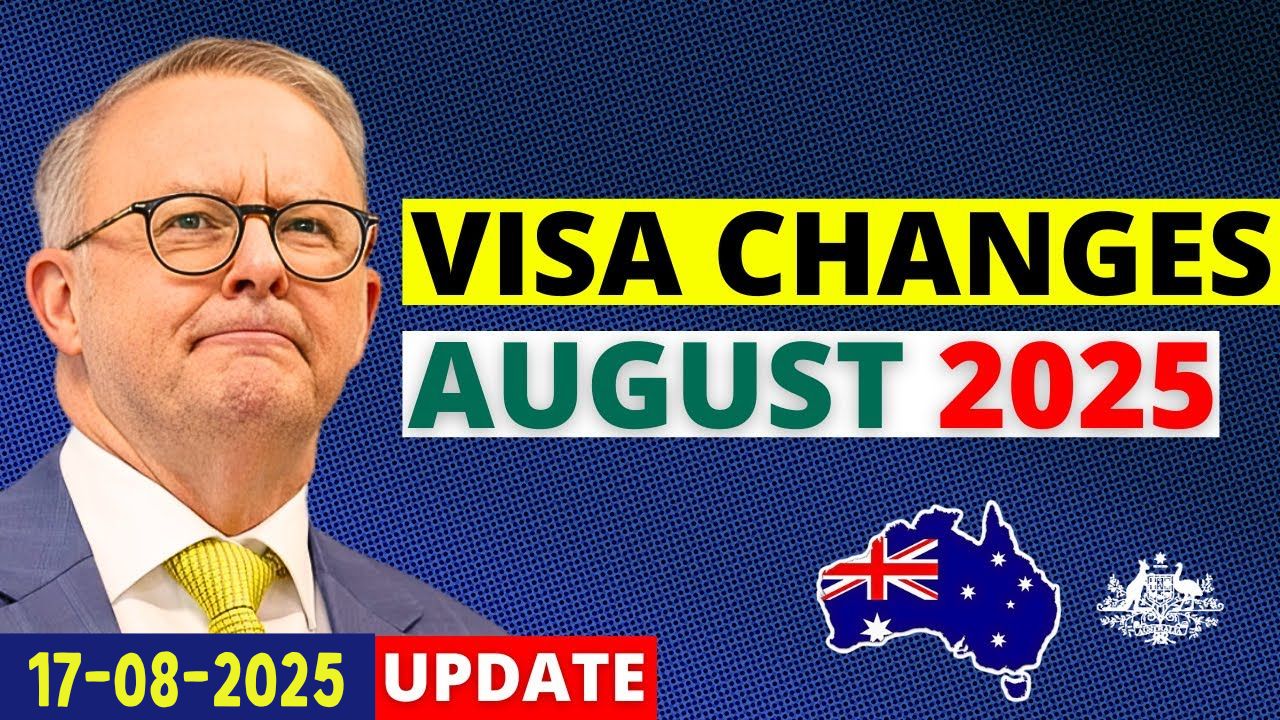Australia continues to refine its migration system to meet labour demands, economic growth goals, and demographic needs. The visa changes introduced in August 2025 mark a significant update for both skilled workers and temporary migrants, aiming to balance opportunities for overseas applicants with local workforce priorities. Understanding these changes is crucial for anyone planning to study, work, or settle in Australia.
Why August 2025 Updates Matter
The August reforms come as Australia faces a growing demand for skilled professionals in healthcare, IT, education, and construction, while also tightening measures to ensure migrants are contributing effectively to the economy. These updates streamline pathways to permanent residency, improve visa processing times, and provide clearer guidelines for international applicants.
Key Visa Categories Affected
Several visa categories saw adjustments in August 2025, especially those targeting skilled migration and temporary workers. The Subclass 189 Skilled Independent Visa and Subclass 190 State-Sponsored Visa both received updated occupation lists, while student and temporary graduate visas have been reshaped to align with skill shortages.
| Visa Type | August 2025 Change | Impact on Applicants |
|---|---|---|
| Subclass 189 Skilled Independent | Updated Skilled Occupation List focusing on healthcare, IT, and engineering fields | Easier entry for applicants in priority roles |
| Subclass 190 State-Sponsored | States given greater flexibility to nominate skilled workers | More regional job opportunities available |
| Student Visa | Work hour limits revised and stricter financial proof requirements introduced | Ensures genuine students and financial stability |
| Temporary Graduate Visa | New rules linking graduates to priority skill areas | Better employment outcomes post-study |
| Employer-Sponsored Visas | Faster processing for critical industries such as healthcare and construction | Quicker entry for sponsored workers |
Skilled Occupation List Update
One of the most notable changes is the refresh of the Skilled Occupation List, which now includes more positions in healthcare, education, and digital technology. This adjustment highlights Australia’s urgent need for doctors, nurses, software developers, teachers, and engineers. Migrants with qualifications and experience in these fields now stand a stronger chance of securing an invitation to apply for permanent residency.
Impact on International Students
For international students, the August update introduced stricter financial capacity requirements and revised post-study work rules. Students will now need to demonstrate stronger financial backing before entry, and graduates will find more structured pathways to employment in high-demand industries. While this may raise barriers for some, it also increases opportunities for serious candidates who want long-term careers in Australia.
Pathways to Permanent Residency
Another major highlight of the August 2025 reforms is the improved clarity around pathways to permanent residency. Skilled migrants working in critical roles are being prioritised for invitations under the 189 and 190 visa streams. Those holding temporary visas also now have more defined routes to transition into permanent residency, provided their work aligns with the updated occupation list.
Final Thoughts
The visa changes in August 2025 underline Australia’s shift toward a more targeted migration system, favouring skilled professionals who can address national shortages. While requirements for students and temporary workers have become more rigorous, the long-term opportunities for those with in-demand skills have improved. For many applicants worldwide, this update represents both a challenge and an opportunity a chance to turn skills into a permanent future in Australia.





